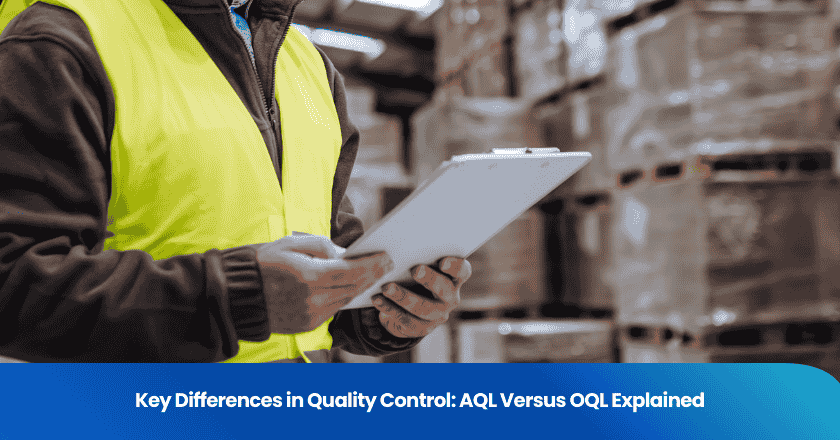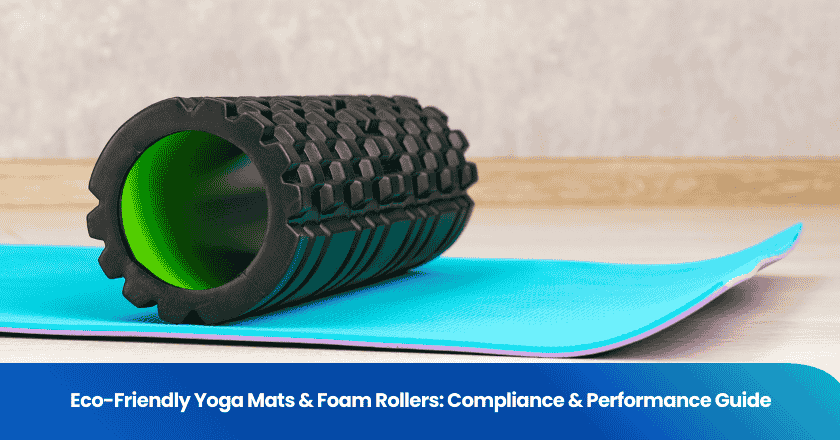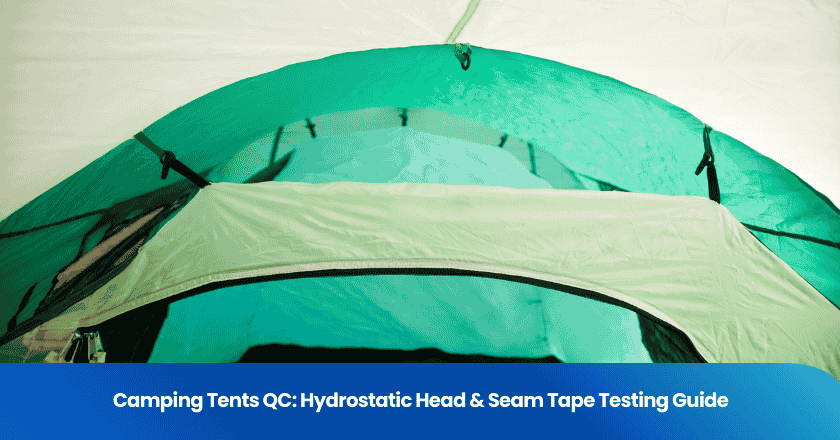
When you evaluate product quality, you need to know the difference between AQL and OQL. Imagine you must decide whether to accept a shipment or monitor a supplier's long-term performance. AQL gives you a clear pass/fail result for each lot, while OQL tracks quality trends over time. By understanding the acceptable quality level definition and how each method works, you can improve your quality control decisions and reduce risk.
Key Takeaways
- AQL (Acceptable Quality Level) helps you set the maximum number of defects allowed in incoming materials. Use it to prevent poor quality from entering your production process.
- OQL (Outgoing Quality Level) measures the actual defect rate in outgoing products. Monitor this to ensure high-quality goods reach your customers and maintain satisfaction.
- Combine AQL and OQL for a stronger quality control system. AQL focuses on incoming inspections, while OQL tracks outgoing quality, helping you catch issues at every stage.
- Regularly review both AQL and OQL results. This practice helps identify trends, address root causes, and maintain high standards in your products.
- Use AQL and OQL data to negotiate better terms with suppliers. This approach ensures quality consistency and reduces the risk of receiving defective goods.
AQL and OQL Overview
What Is AQL?
You encounter the term acceptable quality level definition often when you manage quality control metrics. AQL stands for Acceptable Quality Level. According to ISO 2859, the acceptable quality level is the worst tolerable process average when you submit a continuing series of lots for acceptance sampling. The standard redefined this in 2008 as the acceptable quality limit. You use AQL to set the maximum number of defective items allowed in a sample batch. This metric helps you decide if incoming materials meet your internal standards before you accept them. When you apply AQL, you focus on preventing defects from entering your production process. You rely on this control method to maintain consistency and reduce risk in your supply chain.
Tip: Use AQL to evaluate suppliers and incoming shipments. This approach helps you catch problems early and avoid costly rework.
What Is OQL?
OQL stands for Outgoing Quality Level. You use OQL to measure the actual defect rates found after inspection of outgoing products. This quality control metric focuses on the results you deliver to your customers. OQL reflects the quality that leaves your facility and reaches the end user. You calculate OQL based on the defects observed in finished goods, not just what you expect or tolerate. When you monitor OQL, you track long-term trends and customer satisfaction. This control method helps you ensure that your products meet market expectations and regulatory requirements.
- AQL targets internal standards and incoming materials.
- OQL focuses on outgoing products and customer satisfaction.
- You use both metrics to strengthen your quality control system.
You need to understand the acceptable quality level definition and how both AQL and OQL fit into your overall control strategy. By applying these metrics, you improve your ability to detect issues, maintain high quality, and satisfy your customers.
Acceptable Quality Level Definition (AQL)
AQL in Practice
You use AQL as a sampling standard during product inspection. This method quantifies the maximum number of defective units you can accept in a batch. AQL sets clear acceptance criteria for incoming materials or products. You rely on AQL to guide your inspection teams on how many units to inspect and the threshold of defects that triggers rejection. When you apply AQL, you ensure that only batches meeting your quality standards enter your manufacturing process.
AQL helps you determine the sample size for inspections. You specify the maximum number of acceptable defects in a sample. You also use AQL with inspection levels to decide how many cartons to open. The acceptance number represents the highest count of defective units after inspection that you can allow before rejection. You classify defects into categories to set precise acceptance limits:
| Defect Type | Description | Acceptance Criteria |
|---|---|---|
| Critical | Serious issues that can cause safety hazards | Lower limit for acceptance |
| Major | Significant defects that affect usability | Moderate limit for acceptance |
| Minor | Minor defects that do not affect functionality | Higher limit for acceptance |
Note: You must set strict acceptance criteria for critical defects to protect users and maintain compliance.
AQL standards help you maintain consistency in inspections. You prevent defective units from entering your production line. You also reduce the risk of costly rework and customer complaints.
AQL Example
You need to calculate AQL for a batch of manufactured goods. Follow these steps to complete an aql calculation:
1. Identify the batch size. Suppose you have 2,000 units ready for inspection.
2. Select the AQL level. Choose an industry standard, such as 1.0 for major defects.
3. Refer to the AQL table based on the ANSI ASQ Z1.4 standard.
4. Determine the sample size. For 2,000 units and AQL 1.0, you may need to inspect 80 units.
5. Conduct the review. Inspect the sample and count the defective units.
6. Make decisions based on results. If you find three defective units after inspection and your acceptance number is four, you accept the batch. If you find five defective units, you must reject the batch.
You use AQL to set clear acceptance and rejection criteria. This process ensures that only products meeting your standards move forward. You improve your inspection process and reduce the risk of defective units reaching your customers.
OQL in Quality Control
OQL Explained
You use OQL, or outgoing quality level, to measure the actual quality of products before shipment. This metric helps you assess the observation quality level by calculating the percentage of defects found during final inspection. OQL focuses on the quality that reaches your customers, making it a critical factor in customer satisfaction. You rely on OQL to monitor defect rates and ensure your products meet market expectations.
OQL plays a key role in your quality control system. You track the number of defects found in outgoing goods and compare them to your rejection number. If the defect rate exceeds your target, you must take corrective action. You often measure OQL using DPPM, or defective parts per million, which allows you to evaluate supplier performance and maintain high standards. High OQL strengthens customer confidence and supports long-term business relationships.
Before shipment, you apply OQL through a series of inspection steps. You generate daily reports, conduct final inspections, and analyze defects. You also prepare shipment documents and review corrective actions. This process ensures that only products meeting your quality standards leave your facility.
| Step | Description |
|---|---|
| 7 | Inline Quality Report: Daily inspection report covering stitching, measurement, etc. |
| 8 | End-line / Final Inspection Report: AQL-based report detailing defect percentage and final shipment approval. |
| 9 | Lab Test Report: Testing for fabric and garment properties like shrinkage and strength. |
| 10 | Defect Analysis & Corrective Action Report: Lists major and minor defects with root cause analysis. |
| 11 | Production & Shipment Documents: Includes packing list and buyer’s final inspection report. |
Note: You should review each report carefully to identify trends in observation quality level and prevent future issues.
OQL Example
You want to perform an oql calculation for a recent batch. Suppose you inspected 5,000 units and found 90 defects. You calculate OQL as follows:
1. Divide the number of defects by the total units inspected.
2. Multiply the result by 100 to get the percentage.
OQL = (90 / 5000) × 100 = 1.8%
This result shows your observation quality level for the batch. If your target is below 2%, you accept the shipment. If the defect rate exceeds your rejection number, you must investigate and implement corrective actions. By monitoring OQL, you maintain control over outgoing product quality and protect your reputation.
- OQL helps you reduce inspection frequency when defect rates remain low.
- Consistently high OQL may require improvement plans and more frequent audits.
You use OQL to ensure your products meet customer expectations and regulatory requirements. This approach supports your commitment to quality and strengthens your position in the market.
AQL vs OQL
Key Differences
You need to understand the main distinctions between aql and oql to optimize your quality control strategy. Both metrics help you manage product defects, but they serve different purposes in your process. Aql sets the maximum defect level you can accept in incoming materials. You use this metric to prevent poor quality from entering your production line. Oql measures the actual defect level found in outgoing products. You rely on this metric to ensure that only products meeting your standards reach your customers.
You apply aql during incoming inspections. This approach helps you catch issues early and maintain consistency. You use oql for final audits before shipment. This method allows you to monitor long-term trends and customer satisfaction. Both metrics support your commitment to quality and compliance with international codes.
Note: You reduce buyer rejections and chargebacks by using aql and oql. You also prevent loss of business due to poor visual quality.
You benefit from these measurable advantages:
- You ensure compliance with standards such as ISO 2859-1, WRAP, SMETA, and BSCI.
- You conduct final quality audits using aql levels like 2.5 or 4.0 before shipment.
- You implement random sample inspections for measurement, defects, and packaging.
You strengthen your control system by combining both metrics. You set clear acceptance criteria for incoming goods and maintain high quality for outgoing shipments. This dual approach helps you meet market expectations and regulatory requirements.
Comparison Table
You can compare aql and oql side by side to clarify their roles in your quality control process. The table below summarizes the main differences and practical implications:
| Aspect | AQL (Acceptable Quality Level) | OQL (Outgoing Quality Level) |
|---|---|---|
| Purpose | Sets maximum defect level for incoming materials | Measures actual defect level in outgoing products |
| Application Stage | Incoming inspection | Final audit before shipment |
| Focus | Internal standards, supplier control | Customer satisfaction, market quality |
| Measurement | Uses sampling plans and acceptance numbers | Calculates defect percentage in finished goods |
| Benefit | Prevents defects from entering production | Ensures only high-quality products reach customers |
| Compliance | Meets ISO 2859-1 and other codes | Supports regulatory and buyer requirements |
| Impact | Reduces rework and buyer rejections | Maintains reputation and reduces chargebacks |
You use aql to set the threshold for acceptable defects in each batch. You rely on oql to monitor the actual quality level delivered to your customers. By understanding these differences, you make informed decisions and improve your overall control system.
Practical Implications
For Buyers
You play a critical role in ensuring that products meet your expectations before they reach your shelves. When you choose between aql and oql, you directly influence your risk exposure and product satisfaction. If you rely only on aql, you focus on preventing defective goods from entering your supply chain. This approach helps you reject shipments that do not meet your standards. However, if you also monitor oql, you gain insight into the actual defect rates in outgoing shipments. This data allows you to track supplier performance over time and demand improvements when needed.
Common mistakes include misunderstanding the difference between acceptance criteria and actual delivered quality. You may accept a batch based on aql, but if you ignore oql, you risk missing trends that could harm your reputation. To avoid this, always review both metrics and communicate your requirements clearly to suppliers. Set clear control points and request regular reports on both incoming and outgoing quality.
Tip: Use both aql and oql data to negotiate better terms and ensure quality consistency across all shipments.
For Quality Managers
You drive the success of your organization’s control system. Your decisions on aql and oql shape the effectiveness of your inspection process and the satisfaction of your customers. To achieve quality consistency, you must implement best practices throughout your operation:
1. Control raw materials by testing fabrics and trims before production.
2. Standardize processes with clear SOPs and train your team regularly.
3. Build a skilled workforce through ongoing training and multi-skilling.
4. Inspect at every stage, using aql for inline and end-line checks.
5. Maintain machinery and invest in automation where possible.
6. Prevent defects by applying error-proofing and root cause analysis.
7. Ensure measurement accuracy and follow approved size sets.
8. Focus on finishing and presentation to avoid last-minute defects.
9. Foster a strong quality culture where management prioritizes quality over quantity.
Quality is not an accident—it is the result of careful planning, consistent monitoring, and proactive problem-solving throughout the entire production process. A successful QA Team ensures that quality is built-in, not inspected-in.
You should avoid relying solely on final inspections. Instead, build control into every step. Regularly review both aql and oql results to identify trends and address root causes quickly. This proactive approach helps you maintain high standards and deliver products that meet or exceed customer expectations.
You now understand that AQL sets the threshold for acceptable defects in incoming materials, while OQL measures the actual defect rate in outgoing products. By applying both metrics, you strengthen your quality control system and reduce risk.
Choose AQL when you need to screen suppliers or incoming shipments. Use OQL to monitor outgoing product quality and maintain customer satisfaction. Mastering both concepts helps you deliver consistent results and build trust with your clients.
FAQ
What is the main purpose of AQL in quality control?
You use AQL to set the maximum number of defects allowed in a batch. This helps you decide if you should accept or reject incoming materials before they enter your production process.
How does OQL help improve customer satisfaction?
OQL measures the actual defect rate in outgoing products. By tracking this metric, you ensure that only high-quality goods reach your customers, which helps you maintain a strong reputation.
Can you use both AQL and OQL in the same quality control system?
Yes, you can. You apply AQL to incoming materials and OQL to outgoing products. This dual approach strengthens your quality control and helps you catch issues at every stage.
What happens if the defect rate exceeds the AQL or OQL limit?
If the defect rate goes above your set limit, you must reject the batch or shipment. You should investigate the cause and take corrective action to prevent future problems.
Is AQL or OQL more important for buyers?
Both are important. AQL protects you from receiving poor-quality materials. OQL ensures your customers get reliable products. You should monitor both to manage risk and maintain quality.
Grow your business with TradeAider Service
Click the button below to directly enter the TradeAider Service System. The simple steps from booking and payment to receiving reports are easy to operate.



